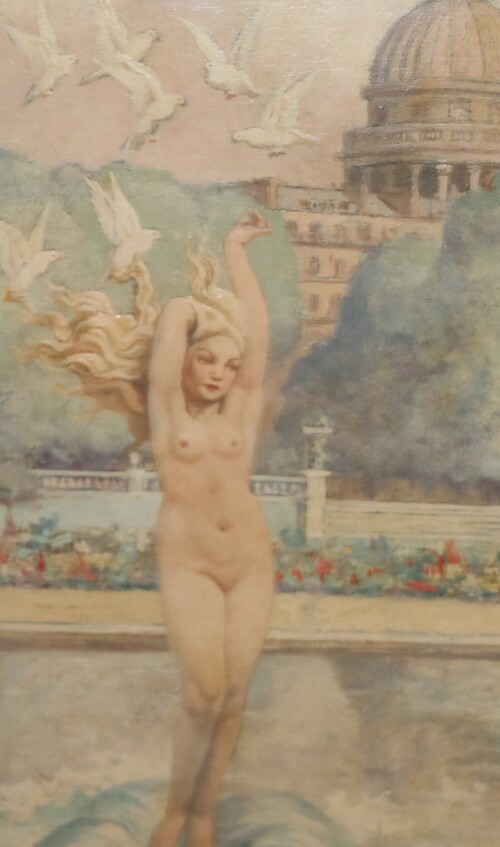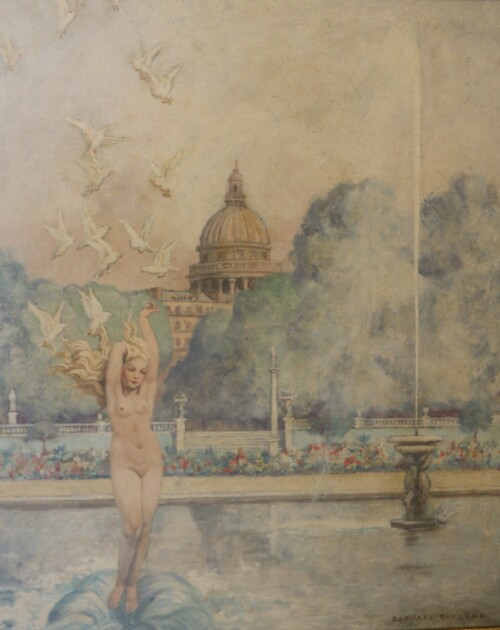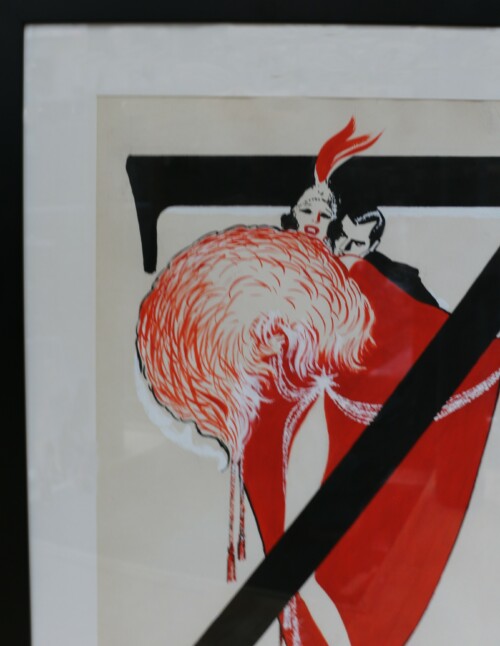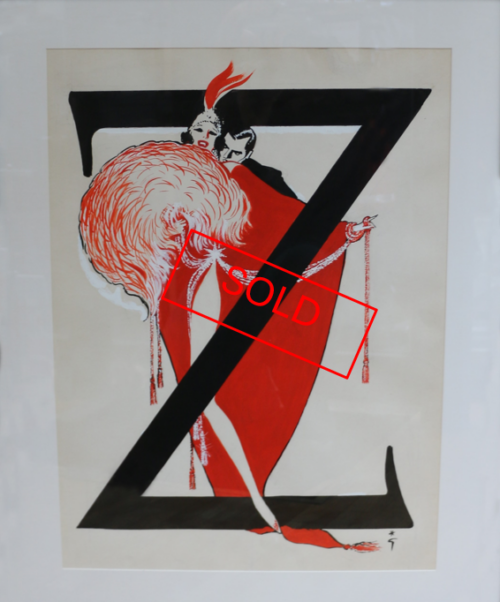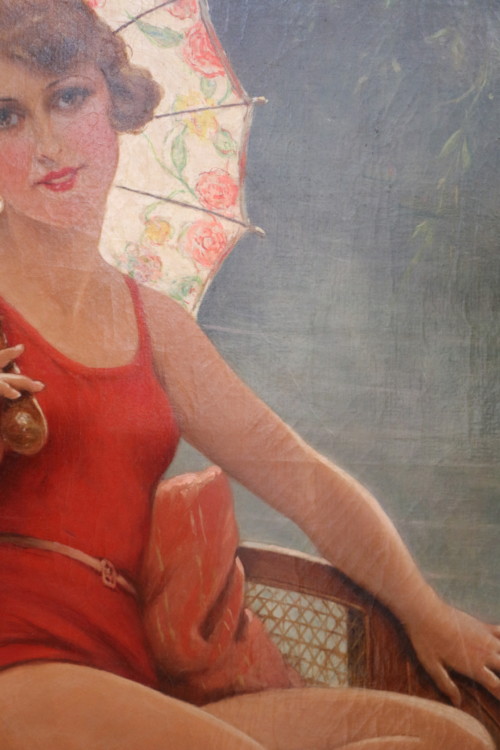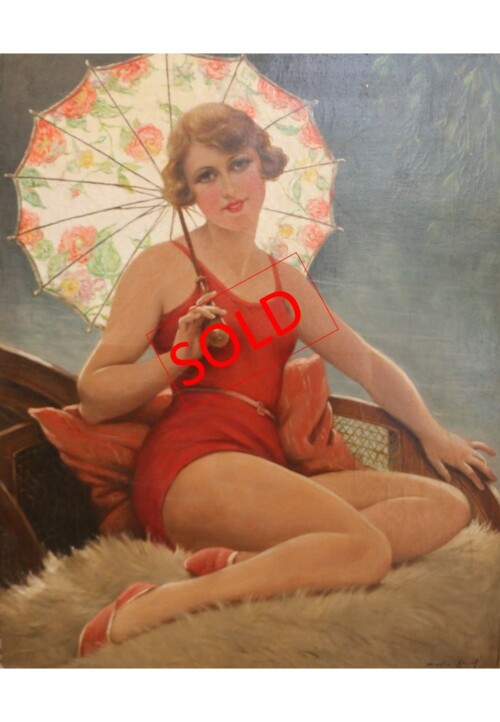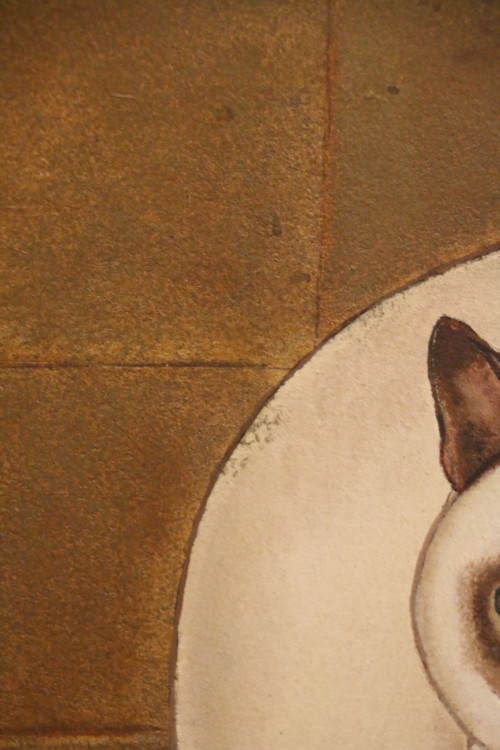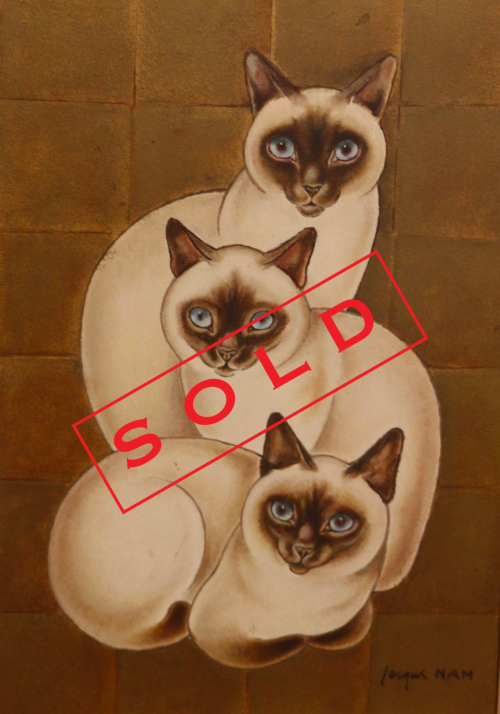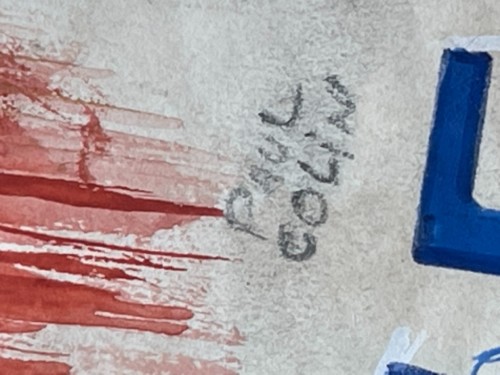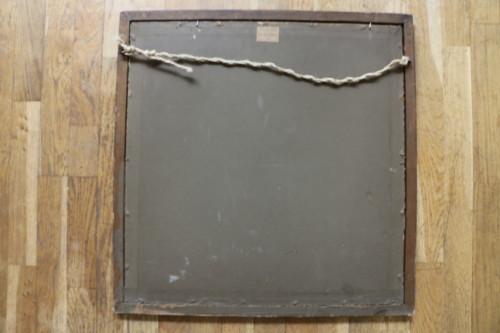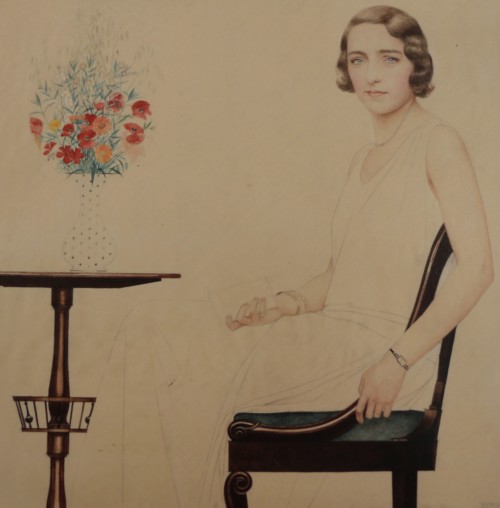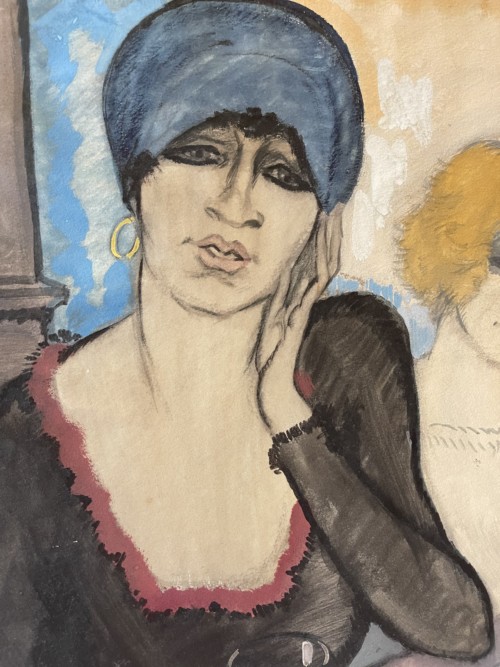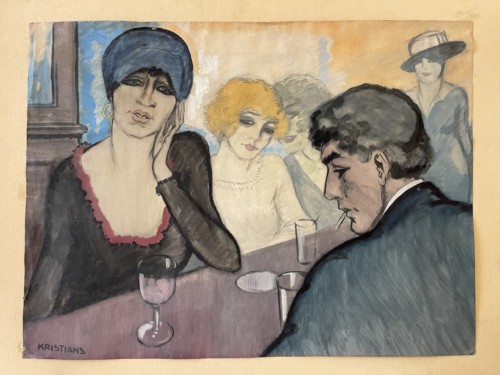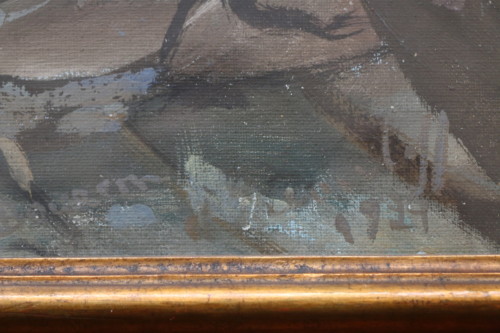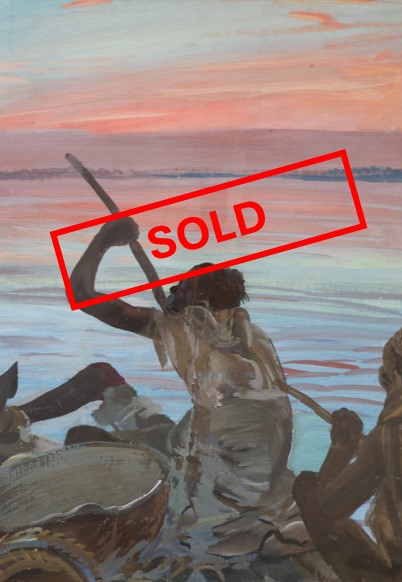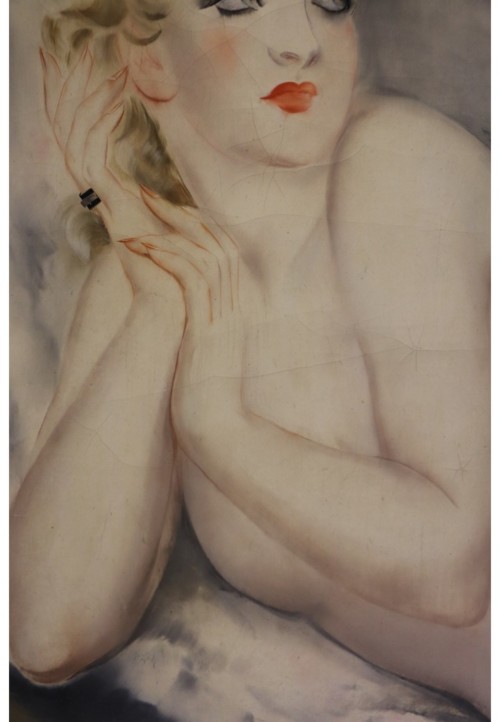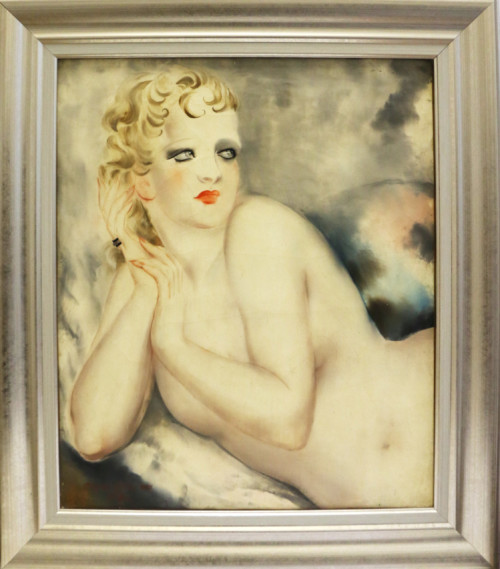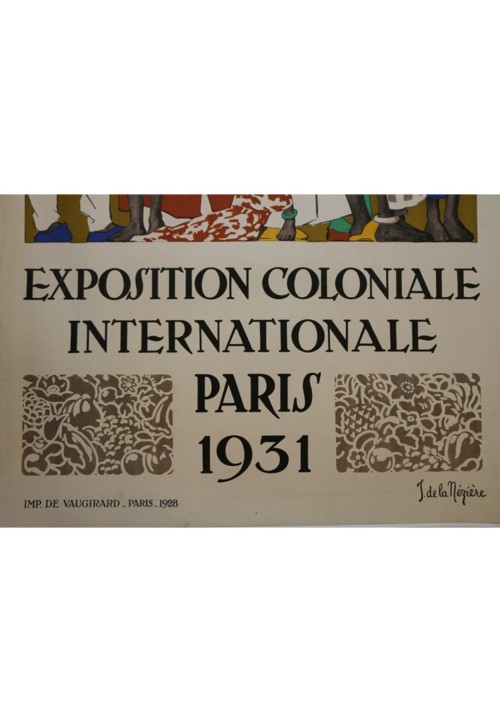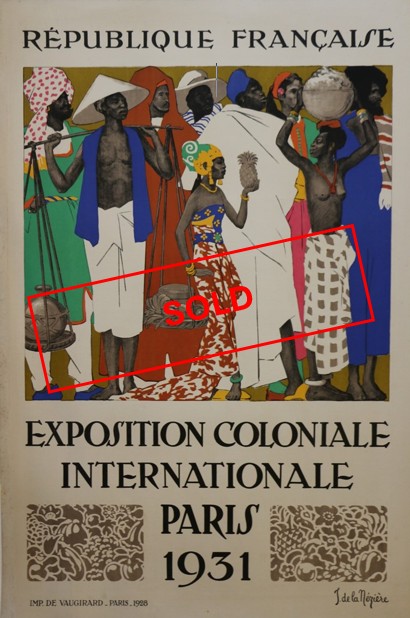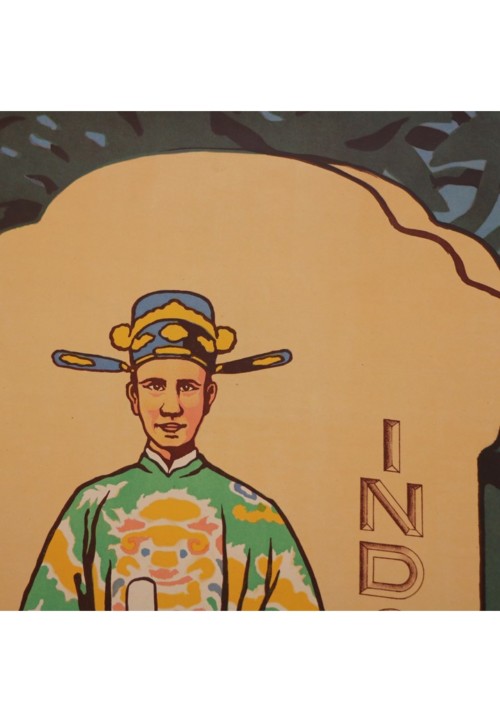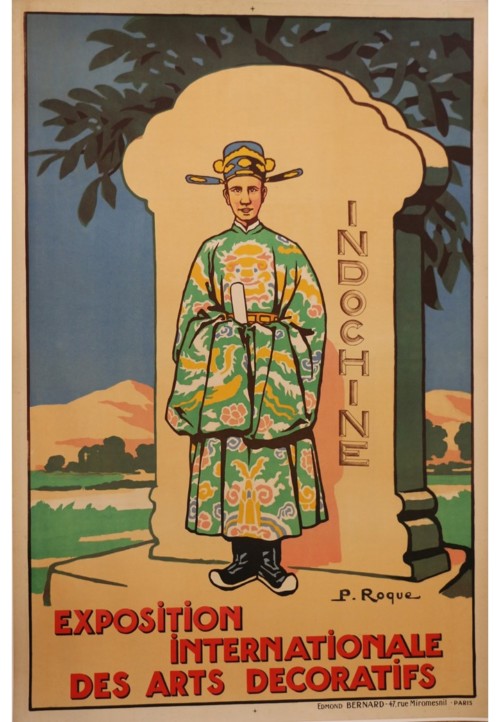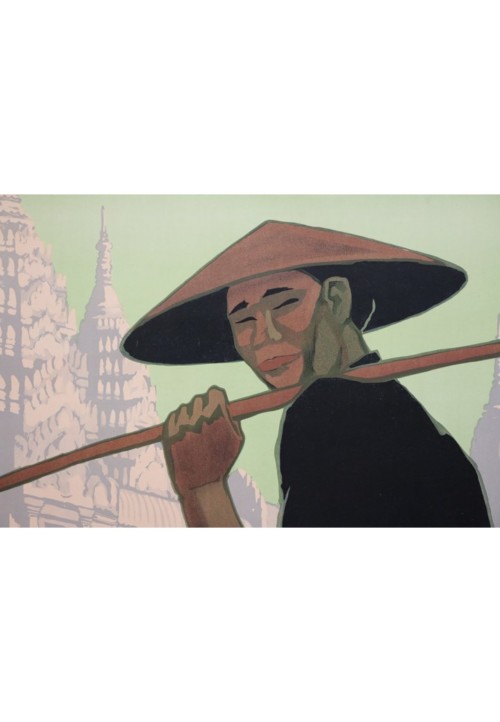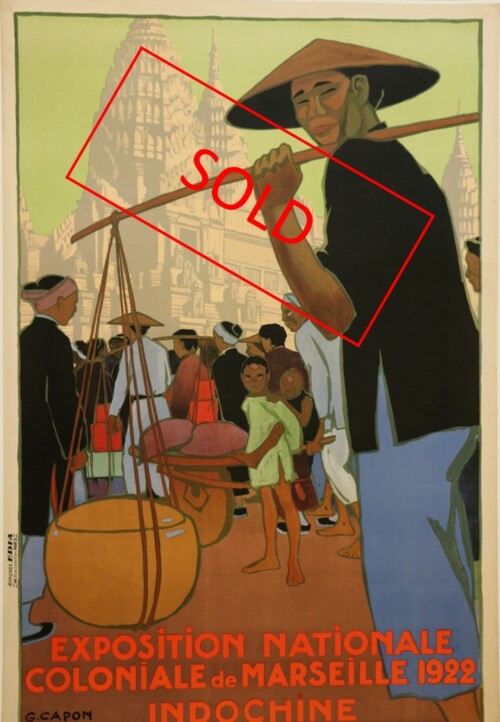AVIS : En vendant cette œuvre, nous ne soutenons pas le concept de colonialisme. Malheureusement, le colonialisme fait partie intégrante de l'histoire et est devenu un thème majeur dans l'art de cette époque. Cette belle image ne contient pas de connotation raciste, que ce soit de manière visible ou à la lumière de l'histoire de l'artiste.
Joseph Daviel de La Nézière était un peintre et illustrateur français qui a travaillé avec le ministère des Colonies. Il a fait sa première exposition au Salon de la Société Nationale des Beaux-Arts en 1897. Il a voyagé largement, créant des croquis et des peintures inspirés par des pays comme l'Italie, le Sénégal et le Japon.
En 1919, il a contribué à revivre l'artisanat local au Maroc, produisant plus de 300 tapis. Il a également conçu des panneaux décoratifs pour le paquebot Normandie et a participé à l'Exposition universelle de 1939-1940 à New York. La Nézière est décédé à Casablanca le 15 avril 1944 et est enterré au cimetière de Passy à Paris.
- Affiche lithographique de l'Exposition Coloniale Internationale de Paris de 1931.
- Imprimée par De Vaugirard, Paris.
Dimensions
H : 120,5 cm L : 80,5 cm
Pour plus d’informations sur le créateur, cliquer sur le nom :
Joseph de la NEZIERE
DISCLAIMER: In selling this piece, we do not support the concept of colonialism. Unfortunately, colonialism is a significant part of history and has become a prominent theme in the art of that era. This beautifully executed image does not contain any racist connotations, either visibly or in light of the artist's history.
Joseph Daviel de La Nézière was a French painter and illustrator who worked with the Ministry of Colonies. He first exhibited at the Salon of the Société Nationale des Beaux-Arts in 1897. He traveled extensively, creating sketches and paintings inspired by countries like Italy, Senegal, and Japan.
In 1919, he helped revive local craftsmanship in Morocco, producing over 300 carpets. He also designed decorative panels for the ocean liner Normandie and participated in the 1939-1940 World's Fair in New York. La Nézière passed away in Casablanca on April 15, 1944, and is buried in Passy Cemetery, Paris.
- Lithographic poster for the International Colonial Exhibition of Paris, from 1931.
- Printed by De Vaugirard, Paris.
Dimensions
H : 120.5 cm W : 80.5 cm/H: 47.44 in W: 31.69 in
